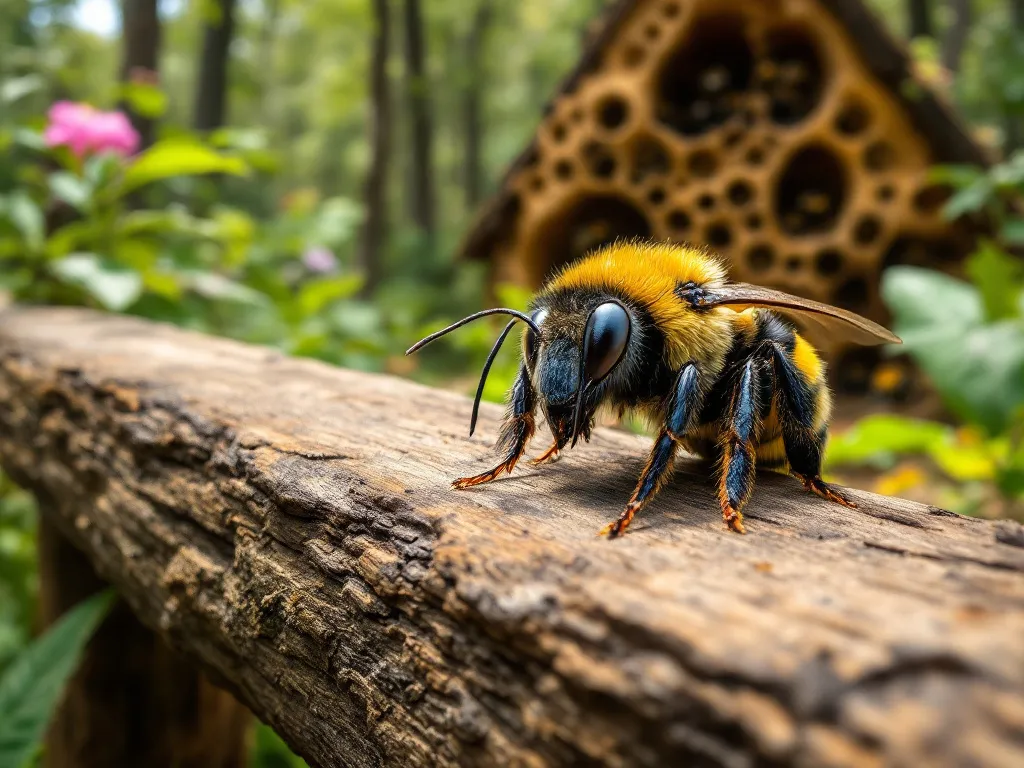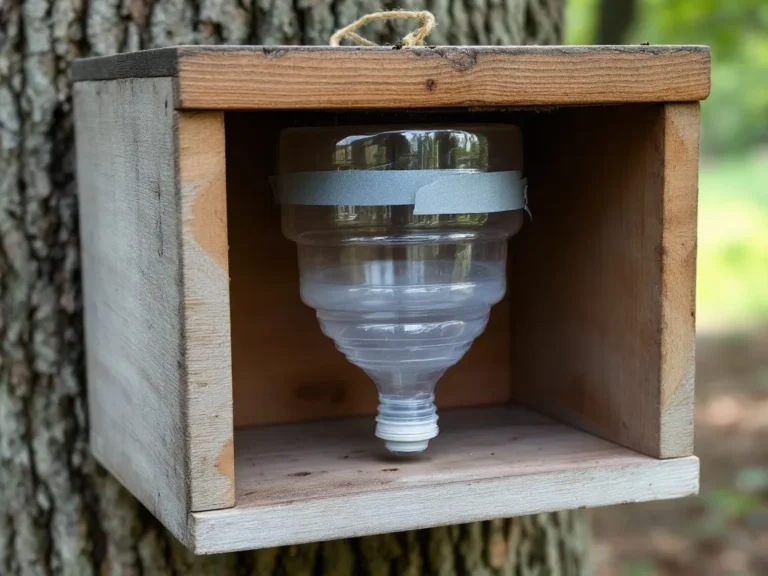When you think of bees, honey production is likely one of the first things that comes to mind. Honeybees are famous for their honey-making skills, but what about other bees, like carpenter bees? Carpenter bees are often seen buzzing around gardens and wooden structures, drilling holes and nesting. But do these solitary bees also make honey like their honeybee counterparts? In this post, we’ll explore whether carpenter bees produce honey and the fascinating differences between them and honeybees.
Do Carpenter Bees Make Honey?
No, carpenter bees do not make honey. Unlike honeybees, which live in large colonies and produce honey as a food source for the hive, carpenter bees are solitary insects that do not have the same social structure or need for honey. Here’s why:
- Carpenter Bees Are Solitary
- Carpenter bees are solitary creatures, meaning they do not live in colonies like honeybees or bumblebees. Each female carpenter bee creates her own nest by boring into wood, laying eggs, and providing her young with food in the form of pollen and nectar.
- Since carpenter bees don’t live in large colonies, there’s no need for them to store food in the form of honey. The resources they gather are used only for their offspring, not for a whole hive.
- No Hive to Feed
- Honeybees make honey because they need a food source to sustain the entire colony, especially during the winter months when flowers are scarce. Honey serves as a stored energy source that can last the hive through the colder seasons.
- Carpenter bees don’t have hives to feed, so they don’t produce honey. Each bee collects pollen and nectar to provide immediate nourishment to their larvae, but they don’t store these resources for future use.
- Different Feeding Habits
- While carpenter bees do collect pollen and nectar, they only use what they need for their young. They create individual nests in wood and pack the chambers with pollen to provide sustenance for the developing larvae.
- This behavior is different from honeybees, who continuously gather nectar to convert into honey and store it in honeycombs for the entire hive.
The Role of Carpenter Bees in Pollination
While carpenter bees don’t make honey, they still play a vital role in the environment as pollinators. Like honeybees, carpenter bees visit flowers to collect pollen and nectar, transferring pollen between plants as they go. This makes them important for the pollination of many crops and wild plants.
- Efficient Pollinators
- Carpenter bees are excellent pollinators due to their size and the way they collect pollen. Their large, fuzzy bodies are highly effective at transferring pollen from flower to flower, making them valuable to gardeners and farmers alike.
- They’re particularly important for certain plants, like passionflowers and tomatoes, which benefit from the “buzz pollination” technique carpenter bees use to shake the pollen loose.
- A Different Kind of Bee
- Unlike honeybees, which live in colonies and work together to produce honey and care for the hive, carpenter bees operate independently. This difference in social structure is one of the main reasons carpenter bees don’t need to make honey.
Carpenter Bees vs. Honeybees
While both carpenter bees and honeybees play essential roles in nature, they differ in many significant ways.
- Social Structure
- Honeybees live in highly organized colonies, with one queen bee, worker bees, and drones all performing specific roles. Their ability to produce honey is essential for the survival of the colony.
- Carpenter bees, on the other hand, are solitary and don’t rely on a community structure. Each female carpenter bee takes care of her own nest and doesn’t share resources like honeybees do.
- Nesting Behavior
- Honeybees build wax combs inside hives or other enclosed spaces where they can store honey. Their nests are usually found in tree cavities or man-made hives.
- Carpenter bees don’t build hives or honeycombs. Instead, they bore holes into wood to create tunnels where they lay their eggs. These tunnels can sometimes cause damage to wooden structures, making carpenter bees a concern for homeowners.
- Honey Production
- Honeybees produce large quantities of honey, not just for themselves but for their entire colony. The honey is stored in wax combs and is vital for the hive’s survival.
- Carpenter bees don’t produce honey because they don’t live in colonies or have a need to store food. They rely on pollen and nectar for feeding their young but don’t create any surplus.
How Carpenter Bees Provide for Their Young
Although carpenter bees don’t make honey, they do gather food for their offspring. Here’s how they provide for the next generation:
- Pollen Packs
- After drilling into wood to create a series of tunnels, female carpenter bees gather pollen and nectar from nearby flowers. They form this material into a “pollen ball,” which serves as food for their larvae.
- The pollen is packed into individual chambers within the nest, where the female carpenter bee lays an egg on top. Once the larvae hatch, they feed on the pollen until they’re ready to emerge as adult bees.
- No Need for Honey Storage
- Since carpenter bees don’t live in colonies or have to worry about feeding a large group, they don’t need to store honey. Instead, they collect just enough pollen and nectar to feed their larvae, leaving no surplus behind.
How to Deal with Carpenter Bees
While carpenter bees don’t produce honey or sting as often as honeybees, their habit of boring into wood can cause damage to structures. If you’re dealing with carpenter bees on your property, here are a few tips for handling the situation:
- Seal Wooden Surfaces
- Carpenter bees are attracted to untreated wood. To prevent them from nesting in your home or deck, consider sealing or painting exposed wooden surfaces. This can deter them from boring into the wood.
- Use Bee Traps
- Carpenter bee traps can be an effective way to catch and remove these bees from your property without harming them. Traps work by luring bees into a chamber they can’t escape from.
- Consult a Professional
- If you’re dealing with a significant infestation, it may be best to consult a pest control professional. They can safely remove the bees and prevent future damage to your home.
Final Thoughts
While carpenter bees don’t make honey like their honeybee relatives, they still serve an essential role in pollination. Their solitary nature and wood-boring habits set them apart from the hive-building honeybees. Understanding the differences between these two types of bees can help you appreciate the unique role carpenter bees play in the ecosystem, even if they aren’t producing honey.
FAQs
- Do carpenter bees make honey?
- No, carpenter bees do not make honey. Only honeybees produce honey for their colonies.
- Why don’t carpenter bees make honey?
- Carpenter bees are solitary and don’t live in colonies, so they don’t need to store food like honeybees do.
- What do carpenter bees eat?
- Carpenter bees feed on pollen and nectar, which they also collect for their larvae.
- Are carpenter bees dangerous?
- Female carpenter bees can sting but are not aggressive. Male carpenter bees do not have stingers.
- How can I prevent carpenter bees from damaging my home?
- Sealing or painting wooden surfaces and using carpenter bee traps can help deter them from nesting.





